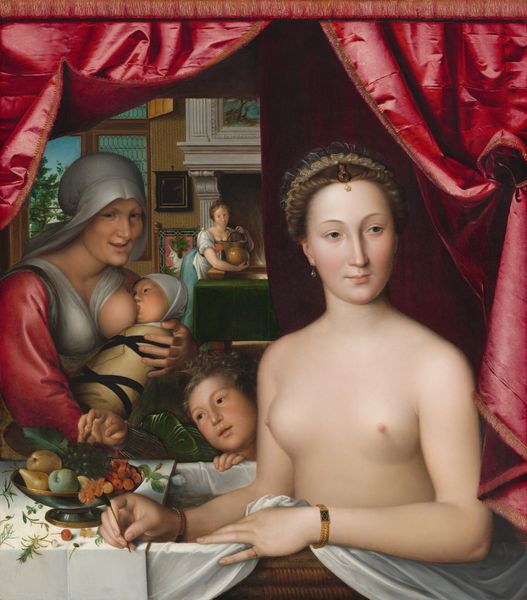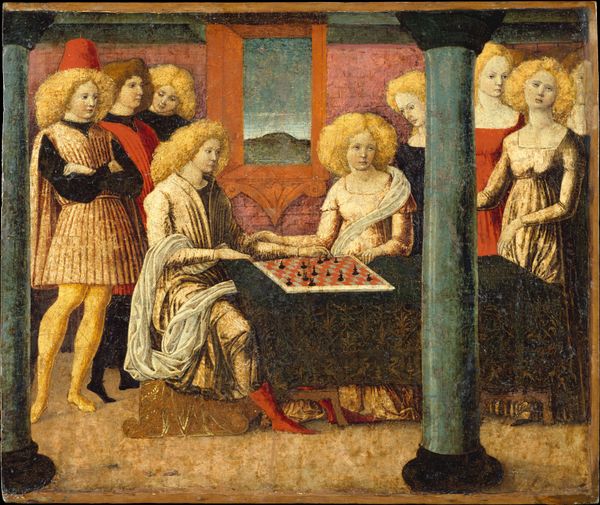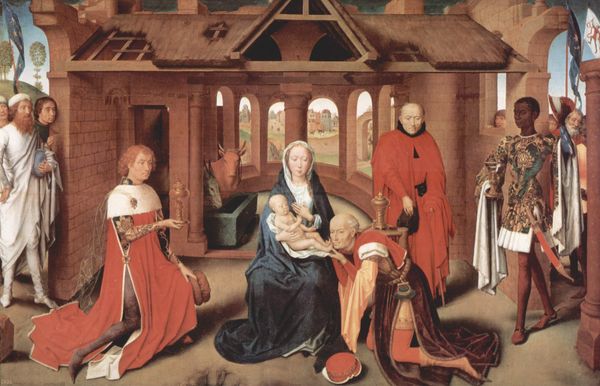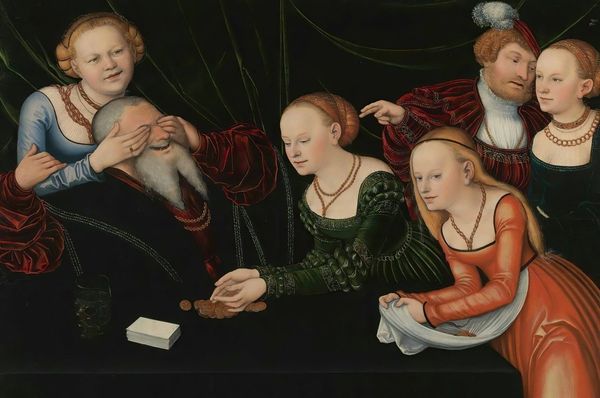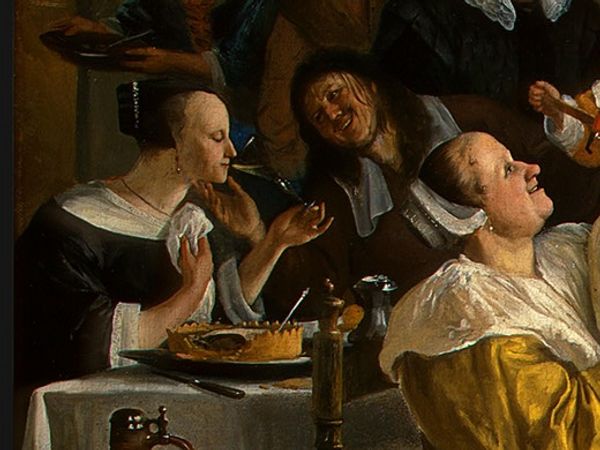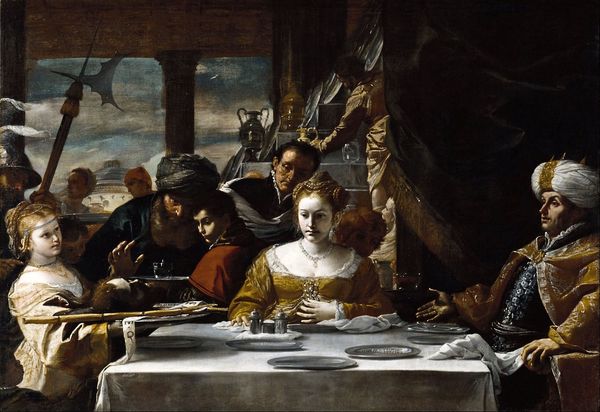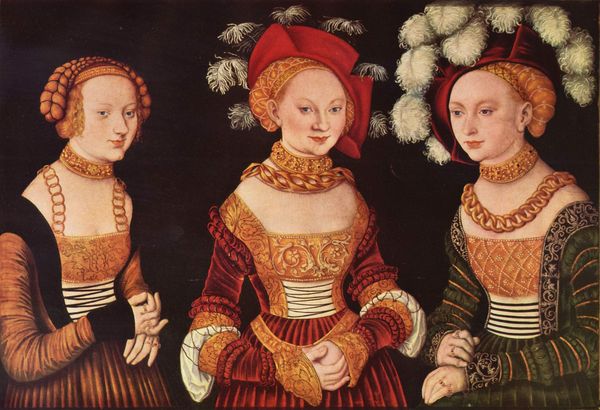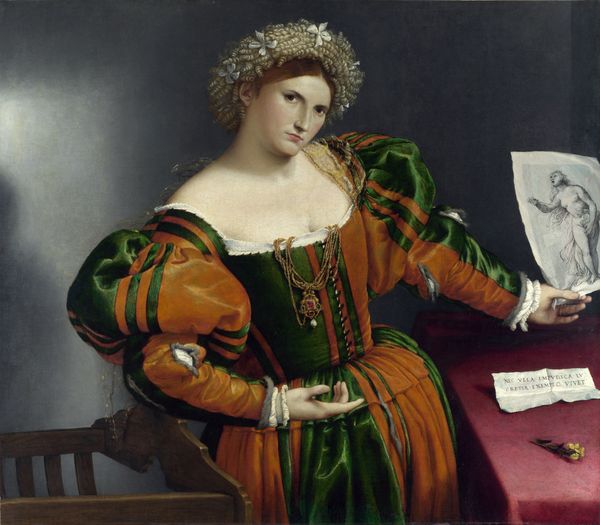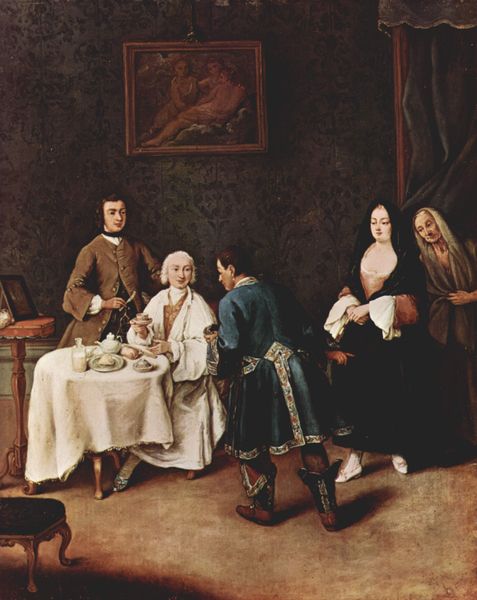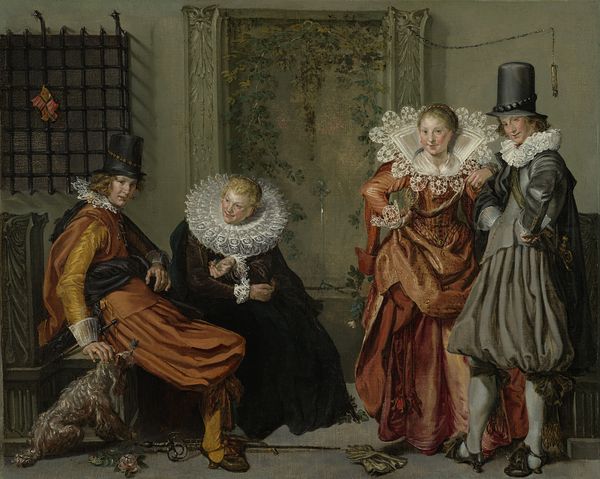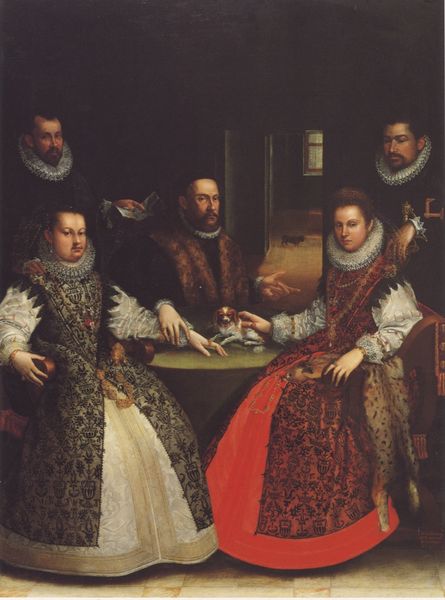
painting, oil-paint
#
portrait
#
baroque
#
painting
#
oil-paint
#
oil painting
#
group-portraits
#
human
#
genre-painting
#
history-painting
#
portrait art
Dimensions: 106 x 146 cm
Copyright: Public domain
Editor: So, here we have Georges de la Tour's "The Cheat with the Ace of Diamonds" from 1635, painted with oil. I find the muted palette really striking. There’s a kind of stillness to the scene, almost theatrical, yet I can't help but think that drama will ensue... What's your read on this piece? Curator: Ah, yes! Drama, definitely drama! It practically leaps from the canvas, doesn't it? This isn’t just a snapshot of a card game; it's a morality play painted with light. Look at how de la Tour uses tenebrism – that strong contrast between light and dark – to highlight the illicit exchange, the furtive glances. What do you make of the costumes, especially in contrast with the dark background? Editor: Well, the details on the clothing and accessories definitely add to the sense of wealth and privilege, don't they? The textures and colors kind of jump out at you. But how does it all play into this "morality play"? Curator: Exactly! These aren't your average everyday players. Consider what De La Tour is implying. A young, well-dressed man is being swindled! Is it just money he risks? Or is De La Tour trying to suggest this could symbolize the loss of innocence, virtue perhaps, to vice? What is really at stake, beyond the game? Do we consider it is rigged from the start? Editor: I see your point! It's not just about cards; it's about power, seduction, and maybe even the dangers of indulgence? So, beyond its aesthetic beauty, it has an urgent message to impart. Curator: Indeed. De la Tour was a master of embedding layers of meaning within seemingly simple scenes. It becomes something timeless, a narrative that resonates through centuries. Food for thought, isn’t it? Editor: It definitely is. Thanks; I feel like I’m seeing more than just paint on canvas now.
Comments
No comments
Be the first to comment and join the conversation on the ultimate creative platform.
